Abstract
The narrative permeating higher education institutions globally is the intention to advance the quality of preservice mathematics teachers to gain better performance than mathematics school learners. In this article we report on a qualitative case study which explored the pedagogical content knowledge (PCK) of preservice teachers (PST) (n = 20) at a South African university of technology. These preservice teachers were provided with activity sheets with past examination questions in analytical geometry. Their written responses were analysed, and verification interviews were conducted. This was followed by an analysis of the preservice teachers’ lesson plans for teaching the topic to Grade 11 learners. The domains and subdomains of the Shulman’s PCK derived Mathematics Teacher’s Specialised Knowledge (MTSK) model were used as the theoretical framework. The study established that the PSTs had limited content knowledge, and knowledge for teaching analytical geometry at Grade 11 as their responses to the activities confirmed that they mostly had procedural understanding. The study was conducted in a context with multilingual PSTs who are training in multilingual classrooms.
Contribution: The study will highlight the misconceptions and existing gaps in the PSTs’ knowledge for teaching analytical geometry in multilingual classrooms.
Keywords: content knowledge; pedagogical knowledge; preservice teachers; multilingual classrooms; analytical geometry.
Introduction
The experience of teaching mathematics in multilingual South African high school classrooms and tertiary institutions triggered research interest in mathematics education in multilingual settings. Barwell (2018) defines a multilingual classroom as one in which many languages are used or present the potential to be used. In these settings, one is often faced with having to research different ways to introduce a mathematical concept to make it accessible and understandable by all in the classroom. This becomes more challenging in a multilingual classroom of preservice teachers (PSTs) who are not only learning the mathematical concept, but also have to develop and improve their Pedagogical Content Knowledge (PCK) in a language that is not their home language.
The challenge here becomes more than Barwell’s (2009) triple challenge of teaching in multilingual classrooms where teachers have to sustain a balance between the Language of Learning and Teaching (LoLT), the language of mathematics, and the mathematics content. In multilingual teacher training classrooms, it becomes a quadruple challenge with the fourth challenge being that the lecturer (PSTs’ educator) is faced with also having to teach to develop and promote the PSTs’ ability to explain the mathematics concepts. These challenges show the direct relationship between language and mathematics (Barwell, Clarkson, Halai, Kazima, Moschkovich, Planas, Setati-Phakeng, Valero, & Villavicencio Ubillús, 2016), and make it necessary for constant research on language and mathematics education, especially given the era in which we live where there is a lot of exposure to different languages and dialects through social media which could affect the understanding of the mathematics register.
According to Wilkinson (2019), the complexity of learning mathematics requires teachers to use language and non-linguistic ways of representing mathematical concepts. The PSTs must also be trained to acquire this skill. In line with this notion, Eikset and Meaney (2018) also noted that teacher training must include developing and facilitating the PSTs’ ability to address language diversity in mathematics classrooms. This leaves one wondering about what could be done in teacher training to support mathematics PSTs in their development of PCK for multilingual classrooms. To address this we formulated the following research question: What pedagogical content knowledge do preservice teachers have for teaching analytical geometry in multilingual classrooms?
The lack of understanding of concepts in analytical geometry has an impact on the understanding of other topics in mathematics and in other subjects (Anif, Prayitno, & Sari, 2019). For this reason, some researchers have investigated learners’ misconceptions in analytical geometry (Edward, 2003; Ozkan, Ozkan, & Karapicak, 2018), while others have studied learners’ strategies in solving problems in analytical geometry (Sproule, 2005; Bansilal & Naidoo, 2012). The present study explores the knowledge that PSTs have for teaching analytical geometry in multilingual classrooms. This was conducted by engaging PSTs who are enrolled in the Bachelor of Education Senior Phase and Further Education and Training in one of the universities of technology in South Africa. In this particular institution, most of the PSTs are African, and the LoLT is English. In working in this context, the study hopes to respond to the calls for more research in multilingual teacher education (Rangnes & Meaney, 2021). It also contributes to the small body of research that exists in PSTs’ PCK for teaching analytical geometry in the South African context. Therefore, the findings are intended to inform teacher training about the aspects of analytical geometry content that need to be further developed in the process of developing PCK in PSTs.
Literature review
The learning opportunities that PSTs are exposed to differ according to the focus of the programme they are enrolled in, courses they select, and work-integrated learning (WIL) (Jung, Stehr & He, 2019). However, there is limited time for PSTs to acquire the knowledge and skills in teacher training (Evens, Elen, & Depaepe, 2017), and in this limited time, the PSTs have so much more to learn than just mastering teaching strategies, especially in this day and age (Althauser, 2018).
For this reason, Lee, Han, Kim and Herner-Patnode (2021) argue that mathematics PSTs’ educators have the challenge of training PSTs to understand learners’ sources of errors, misconceptions, and mathematics learning needs. Hence, teacher training institutions must make it their focus to create opportunities for PSTs to reflect on their content and teaching knowledge through course and practical work. To ensure lasting change in mathematics Karisan, Macalalag, and Johnson (2019) advised that PSTs must be carefully guided to thoughtfully consider the outcomes of their pedagogical choices. This is because PSTs have difficulty in effectively reflecting and adapting their practices to differ from their school experiences (Karisan et al., 2019).
In a study that explored PSTs’ content knowledge and ability to explain concepts, Bjerke and Eriksen (2016) measured the self-efficacy of PSTs in tutoring mathematics and found that mathematics PSTs had more instrumental understanding (knowing how) and showed signs of lacking relational understanding (knowing why) (Skemp, 1976). Concurring with this finding, Murtafiah, Sa’dijah, Candra, Susiswo, and As’ari (2018) claim that most PSTs can only rely on descriptive explanations in their mathematics teaching. This has an impact on the PSTs’ ability to facilitate learning; Bjerke and Solomon (2020) highlighted that there is a strong correlation between a teacher’s quality of mathematics knowledge and their ability to create opportunities for learners to learn the subject.
Content knowledge is essential in mathematics teaching (Guler & Celik, 2018). Yet the attention it must receive is being silenced by PSTs’ PCK in research (Lowrie & Jorgensen, 2016). For this reason, this study focuses on both mathematical knowledge and PCK by investigating the PSTs’ content knowledge using analytical geometry past papers, and analysing their analytical geometry lesson plans for PCK. The concepts of PCK and content knowledge as the fundamental components of knowledge for teaching (Shulman, 1986), and crucial aspects of teacher training are further discussed in the theoretical framework of this study.
Theoretical framework
This study employs the Mathematics Teacher’s Specialised Knowledge (MTSK) model by Carrillo-Yañez, Climent, Montes, Contreras, Flores-Medrano, Escudero-Ávila, Vasco, Rojas, Flores, Aguilar-González, and Ribeiro (2018) as a framework. The model is a modification of Shulman’s (1986) categories of teachers’ exclusive knowledge, which are subject matter knowledge, curricular knowledge, and PCK. The domains of the model are mathematical knowledge and PCK. Each domain has three different subdomains and one common subdomain (see Figure 1). The common subdomain is ‘Beliefs’, which is about beliefs about both mathematics as a subject and the teaching and learning of the subject (Carrillo-Yañez et al., 2018). This domain will not be referred to in this study because it does not look into the PSTs’ beliefs about the subject or teaching.
 |
FIGURE 1: The Mathematics Teacher’s Specialised Knowledge (MTSK) model. |
|
Mathematical knowledge
In the mathematical knowledge domain, the Knowledge of Topics (KoT) is about the ‘what and in what way’ (Carrillo-Yañez et al., 2018, p. 242) the teacher knows the mathematics topics. According to Zakaryan and Ribeiro (2019), KoT allows teachers to understand the mathematics content that is presented in textbooks and other curriculum resources. The Knowledge of the Structure of Mathematics (KSM) is the knowledge of the connections and relationships between mathematical concepts. Carrillo-Yañez et al. (2018, p. 244) define the Knowledge of Practices in Mathematics (KPM) as the ‘means of production and mathematical functioning’. It is the knowledge of how the KSM relationships are established (Ferretti et al., 2021).
Pedagogical content knowledge
Pedagogical content knowledge implies a specialised form of subject matter knowledge; it can also be referred to as ‘subject matter knowledge for teaching’ (Scheiner, Montes, Godino, Carrillo, & Pino-Fan 2019). Carrillo-Yañez et al. (2018) look at PCK not only as mostly or only about the knowledge of the different aspects of teaching, but also as the understanding of the learning process. In their PCK domain, the Knowledge of Mathematics Teaching (KMT) is based on theories and research in mathematics education, and at times on the teacher’s experience and reflections on their teaching practice. The Knowledge of Features of Learning Mathematics (KFLM) is the teacher’s knowledge and understanding of the learning process and their awareness of the possible difficulties and obstacles in the learners’ learning process (Ferretti, Martignone, & Rodríguez-Muñiz, 2021). The Knowledge of Mathematics Learning Standards (KMLS) entails knowing about the level of their learners’ ability to understand and construct mathematical knowledge, which determines their suitability and ability to learn mathematical concepts (Carrillo-Yañez et al., 2018).
In this study, the MTSK model is employed because it explores both the knowledge used and needed by mathematics teachers for teaching and is applicable in organising the necessary training needs for PSTs (Carrillo-Yañez et al., 2018). In exploring the PSTs’ knowledge for teaching through the observation of lesson plans and analysis of the PSTs’ interview responses, this framework needs an aspect that captures the PSTs’ lesson intentions, goals, and objectives. To capture this, the framework adopts the concept of the object of learning from variation theory (Marton & Booth, 1997). This emanates from the notion that the knowledge of teaching is also about one’s ability to promote learning, which Marton and Booth (1997) argue has two aspects: what to learn, and how it is learned. The object of learning is the ‘what is to be learned’. It is described as being about the critical features of the concept that ‘is to be learned’ (Bussey, Orgill, & Crippen, 2013).
The object of learning is described in three parts in variation theory. These are: (1) the intended object of learning – what learners should learn about a concept according to the teacher, policy documents, and curriculum resources, (2) the enacted object of learning – what is possible for learners to learn about a concept during a lesson, and (3) the lived object of learning – what learners experience and actually learn (Bussey et al., 2013).
This framework only employs the intended object of learning to provide a base from which the PSTs’ PCK can be observed. That is, by looking at what they think learners should learn, and how they intend to deliver it. This is in line with the view that Carrillo-Yañez et al. (2018) present, as already mentioned. They are of the view that PCK is about not only knowing the different aspects of teaching but also understanding the learning process. This can also be seen from the KFLM subdomain, which resonates with most of the aspects of variation theory that are not touched on in this framework and study because of their relevance to the study.
Figure 2 shows a schematic view of how the framework of this study merges MTSK and the intended object of learning.
 |
FIGURE 2: Mathematics teacher’s knowledge informing the intended object of learning. |
|
The framework in Figure 2 implies that the teacher’s knowledge, in this case mathematical knowledge and PCK, inform the teacher’s ability to specify the intentions and goals of a lesson. The framework shows that mathematical knowledge and PCK are interdependent. This claim is based on teaching experience from which an observation was made. That is, over the period of teaching mathematics, content knowledge further develops and is refined through research and reflections, which is drawing from KMT. Moreover, when thinking about the best way to present a mathematical concept, a teacher often draws from their KPM in thinking about the development of the concept. This is for them to be able to teach the application of concepts, which also further develops the teacher’s conceptual understanding. In the case of PSTs, the opportunity to refine their content knowledge and PCK is through WIL.
Methodology
This qualitative case study employed the interpretative approach, which according to Chilisa (2012) allows for opportunities to understand and describe the perspectives of the involved participants. The approach allowed the study to probe into the PSTs’ understanding of analytical geometry, and their knowledge for teaching the topic in multilingual classrooms.
In this study, the participants were mathematics PSTs. The PSTs were part of a cohort of 58 PSTs from which 23 PSTs were willing to participate in the study. Our observation was that some of the PSTs were not willing to write an activity and then be interviewed about their performance. The reason for this could have been that one of the authors had taught the group previously, but not during the period of data collection.
Out of the 23 PSTs, 20 were sampled using purposive non-probability sampling because the group from which the sampled PSTs was sampled was in the third year of study, and would have had the opportunity to teach Grade 11 analytical geometry during their third year of WIL. The instruments of data collection were in the form of analytical geometry content activities from past examinations papers, lesson plans, and follow-up interviews. These instruments worked together and enhanced what sets this study apart, which is looking at both mathematical and pedagogical knowledge because content knowledge is a component of PCK. This study is different in that it highlights the link between the PSTs’ content knowledge and PCK, and also highlights the importance of focusing on the lesson planning aspect in teacher training.
The activities were intended to gauge the mathematical knowledge that the PSTs had for teaching the topic, while the lesson plans and interviews were set to understand their analytical geometry pedagogical knowledge. However, the interviews contributed in the investigation of both content knowledge and pedagogical knowledge because they provided information about the PSTs’ understanding of concepts, and their thinking about teaching the concepts. This is in line with the argument made by McGrath, Palmgren, and Liljedahl (2019) that qualitative research interviews assist researchers in understanding the subjective perspectives of the participants rather than making generalisations about the whole population.
To ensure validity in this study, the collected data were transcribed using accurate technologies to ensure that transcription was clear and precise, and the PSTs’ content and responses were captured without being altered. For validity of data analysis and results, the PSTs’ activities were all marked using a formally structured and moderated memorandum. To further understand their point of view, the PSTs were interviewed to follow up on their responses. Their lesson plans were all analysed using the same descriptors. For reliability, audio recording was used instead of videotaping the interview as this would have influenced the way the participants behaved and responded, and the same tools were used for data analysis. This is in line with the way Noble and Smith (2015) explain validity and reliability, the former being a measurement of accuracy in the representation of collected data in the findings, and the latter being the consistency of the analytical procedures and accounting for personal and research method biases.
Ethical considerations
The participants of this study were handed hard copies of letters of information and consent forms, which they signed and returned. This was after obtaining permission to conduct this research (as part of a PhD study) from the Durban University of Technology Institutional Research Ethics Committee (IREC 118/22) on 28 November 2022. Ethical principles were adhered to in accordance with their relevance in this study. The names and personal information of the PSTs are kept anonymous and confidential by using numbers in identifying them. Their content, which is received as data, is only accessible to the authors, and is stored safely in the institutional password-protected cloud (recordings), and locked lockers in the case of hard copies of lesson plans and activities.
Data analysis
Data analysis took place in two phases. Phase 1 was the analysis of the activity responses and follow-up interviews responses. In this phase, the mathematical knowledge domain and its subdomains from the MTSK model were used as the tool of analysis. Phase 2 was the analysis of the lesson plans and follow-up interviews where the intended object of learning was analysed in the lesson objectives and content. This was also done by checking the lesson plan content alignment to the National Curriculum and Assessment Policy Statement (CAPS). The PCK domain and its subdomains were used for analysis in phase 2. Figure 3 outlines the data analysis process and its phases.
Phase 1 created an opportunity for the study to explore the PSTs’ content knowledge which is directly related to pedagogical knowledge (Bjerke & Solomon, 2020). Phase 2 explored the pedagogical knowledge of the PSTs and draws from their mathematical knowledge. The applied descriptors in the data analysis process are outlined in Table 1.
| TABLE 1: Descriptors for phase 1 and 2 data analysis. |
The descriptors in Table 1 were modified from the definitions of the subdomains in the MTSK model (Carrillo-Yanez et al., 2018). The modifications were made to suit the concept focus of the study and the data collection tools.
Data analysis and discussion
The two phases of analysis use the MTSK model to explore the PSTs’ pedagogical content knowledge which also entails content knowledge (Guller & Celik, 2018). Phase 1 explores the mathematical knowledge aspect of the PSTs’ knowledge, and phase 2 explores their PCK and the way they worked with the intended object of learning. Both phases of analysis refer to the descriptors in Table 1, where the tables are labelled 1.1 for phase 1 and 1.2 for phase 1.2, and letters differentiate the tables labels in each phase.
Discussion of phase 1
This phase analyses the PSTs’ mathematical knowledge using the subdomains of the mathematical knowledge domain from the MTSK model and the descriptors in Table 1.1.
It begins by presenting an overview of the PSTs’ average performance in each sub-question of the three questions in the activity (see Figure 4). The average performance graph paves the way for the diagnostic analysis of each question with figures that show the questions in discussion and tables that capture some of the PSTs’ responses to the questions.
 |
FIGURE 4: Sub-question average performance percentage of the PSTs. |
|
In exploring the PSTs’ content knowledge to understand the way in which it informs their PCK, the analysis of their responses included looking at the types of questions they were working with. The questions were looked at in terms of whether they were calculations that require substitutions and algebraic manipulations, calculations with connections of different concepts, or calculations with explanation in their responses, that is, where they must provide the ‘how’ or ‘why’. As it shows on the graph in Figure 4, the average performance percentage of the PSTs in sub-questions 1.1, 1.2 and 1.4 was above 80%. This was owing to that these sub-questions were calculation questions which simply require substitution and algebraic manipulations.
The sub-questions are captured in Figure 5, where sub-questions 1.1, 1.2 and 1.3 require substitution and algebraic manipulation calculations, 1.6 requires calculations with connections, and 1.5 requires calculations with some explanation. More examples of questions that required explanation are explored later in the analysis.
Questions that required calculations with explanation in the response and those that required connections of concepts to solve the problem had significantly low performance. This was seen in sub-questions 1.5 and 1.6 for which the average performance was 37% and 29%. Confirming the finding made by Murafiah et al. (2018), the PSTs in this study treated explanation questions with calculations and hardly provided the ‘how’ or ‘why’; see examples of some of the different responses to sub-question 1.5 in Figure 5.1.
 |
FIGURE 5.1: Four PSTs’ responses to sub-question 1.5: (a) PST4; (b) PST5; (c) PST6 and (d) PST11. |
|
Some of the expected responses to sub-question 1.5 were:
- The diagonals are perpendicular to each other.
- AC Bisects BD – a kite is symmetrical about the main diagonal.
- AB = AD and CB = CD – a kite has two pairs of adjacent equal sides.
Only one PST out of the 20 got the full 3 marks for this question. The rest of the PSTs could not use the properties of a kite to make the deduction based on their answers to the preceding sub-questions like sub-question 1.4 from which they could also calculate the midpoint of BD. The PSTs’ responses show that they knew that the adjacent sides are equal but did not know the correct term to use. Some either left the word adjacent out or used the word opposite when referring to the adjacent sides. The PSTs did not understand or know the mathematical term, which would also affect their ability to explain it. PST10 also used the word ‘opposite’ and was asked to explain why. See Excerpt 1 below for the engagement with PST10:
Interviewer: Which sides are opposite on this diagram, and why?
PST10: AD and AB because they are next to each other and kind of face each other like this … [does a V shape demonstration with hands]
The PST’s lack of knowledge and understanding of the term ‘adjacent’ and their misconception of the word ‘opposite’ in mathematics terms highlighted the need to increase attention on multilingual PSTs’ training to teach in multilingual classrooms. It echoed the argument made by Wilkinson (2019) that mathematics learning is complex because it requires teachers to use language and non-linguistic ways to represent mathematical concepts. The way in which PST10 went on to demonstrate a V shape using hands to show what they meant by opposite indicated that beyond their limited understanding of the mathematical language, they also didn’t have a visual or abstract view of the mathematical term. In this regard, KSM was lacking because the PST did not seem to be able to see relationships in mathematical concepts. The argument behind this claim is that the PST should have remembered to use a square as a point of reference to remember that the opposite sides of a square are parallel, which means their distance is the same at every point. In that sense AB and AD are not opposite sides on the given diagram because they intersect. Please note that the referred point of reference or example is applicable in as far as high school mathematics is concerned.
The issue of understanding the LoLT and mathematical language contributes to the PSTs’ inability to provide the ‘how’ or ‘why’ for a solution based on calculations, which also shows that they rely on instrumental understanding (knowing how) for mathematical explanations (Bjerke & Eriksen, 2016). This exacerbated their lack of KSM because their limited understanding of the language limits their ability to express their knowledge and understanding of the inter and intra connections in the concepts. Limited KSM in the PSTs was also seen in their responses to sub-question 2.1.2, as shown in Figure 6.
In sub-question 2.1.2, the PSTs are required to find the value of m. This question did not need much calculation besides using the given information that the circle touches the x-axis. It received a 43% average performance with many of the PSTs attempting to use the equation of a circle, the incorrect one in the cases that are presented in Figure 6.1, which shows some of the examples of the PSTs’ responses to the question.
 |
FIGURE 6.1: Two PSTs’ responses to sub-question 2.1.1: (a) PST18 and (b) PST19. |
|
The PSTs did not use the given information to respond to the question. Besides this, they still could not see from the diagram that the circle touches the x-axis, which gives the y-coordinate of the centre away. In their responses, the PSTs used the equation of a circle with centre on the origin. Beyond the PSTs’ inability to see the relationship between the radius and m which shows lack of KSM, the PSTs also lacked KoT because they were not able to identify the ‘what’ – m in relation to the radius – and the ‘how’, which is the x-axis being a tangent to the circle.
It is justified to argue based on the definitions of KoT and KSM that they form a crucial part in a PST’s development of PCK for teaching mathematics, especially in multilingual classrooms where explanation, elaborating, and demonstrating play a vital role in enhancing learners’ understanding of concepts. It might be very difficult for anyone to explain or demonstrate the way a concept works without the understanding of the ‘what’, ‘why’, and ‘how’.
The lack of KSM and KoT was also observed to be the reason behind the errors and misconceptions that the PSTs had. One of the most observed errors and misconceptions was observed in sub-question 1.6 (shown in Figure 5) where the PSTs had to identify the height of a triangle.
 |
FIGURE 5: Activity question 1 (recaptured for ease of reference to sub-question 1.6). |
|
Some of the PSTs’ responses to this sub-question are captured in Figure 5.2. The misconceptions are also in line with the context of the study being on multilingual PSTs training to teach in multilingual classrooms because they also highlight the issue of their understanding of the LoLT and mathematical language.
 |
FIGURE 5.2: Sample responses to sub-question 1.6: PST2 and (b) PST3. |
|
These responses indicated that the PSTs did not understand the area formula of a triangle in terms of what b and h mean on the diagram. PST2 did not use the correct lines as the base and height, while PST3 used the correct base, but incorrect height. These misconceptions could easily impair the development of their PCK because the responses show evidence of not knowing what the base or height of a triangle is, and how they are identified, which is lack of KoT. This means the PSTs may not be able to explain these properties to learners.
The two PSTs were invited for interviews to follow up on their responses to this sub-question and their responses of PST2 and PST3 are captured in Excerpt 2:
Interviewer: Why did you use sides AB and BC to calculate the area of triangle ABD?
PST2: It was a mistake. I see why it is wrong.
PST3: I thought BC is a base because it looks like the side the triangle is sitting on AB is the height because it is steep and higher.
PST3’s response showed that they had a misconception that may have been created by the way the concept of a base of a triangle was explained in high school. The PST worked with the positioning of the triangle instead of working with the given geometric properties. This observation corresponds with the finding made by Krajcevski and Sears (2019) that some PSTs have difficulties in conceptualising the definition of an altitude and the other properties of triangles. In the case of the PSTs in this study, this also indicated a lack of KSM and KPM. The lack of KPM was evident in their inability to see how and where geometric properties and concepts are applied.
The identified errors and misconceptions in this analysis phase established a platform for this study to move with the notion that was presented by Sugimoto (2018). The notion was that there is so much to learn when it comes to factors that shape PSTs’ development and understanding of language in mathematics during their teacher training. Learning about these factors may be the key to improving mathematics education in South Africa.
Some of the PSTs demonstrated KoT and KSM in the way in which they presented their responses. One such PST is PST8 whose response to sub-question 3.4 showed that they were able to see connections in mathematical concepts. The sub-question referred to the diagram in Figure 7 where the PSTs had to calculate the angle theta.
PST8 responded and presented their work as shown in Figure 7.1. The PST also portrayed KPM in the way they show evidence of being able to demonstrate clear understanding of how analytical geometry concepts are used and applied to perform mathematical operations and solve practical problems.
 |
FIGURE 7.1: Presentation of PST8 to sub-question 3.4 (captured in Figure 7): (a) answer and (b) construction. |
|
When approached for a follow-up interview to probe into the PST’s reason for introducing the line RZ to the diagram, the PST had the following to say in an interview engagement with PST8 (see Excerpt 3):
Interviewer: What purpose did line RZ serve in this solution method?
PST8: It was before I found the right way to do it because I thought the line was going to create a 90° angle, but it didn’t work.
Interviewer: Why do you think it would not work?
PST8: Because Z is not on the circumference.
Knowing not to assume that any angle that is subtended by a diameter is 90° also shows the PST’s KPM and KoT because they know what an angle subtended by a diameter is and know how to construct such an angle. The PST has KSM because they could clearly see the inter and intra relationships within concepts in the problem. Line 4 shows that the PST’s mathematical knowledge is contributing to the development of their pedagogical knowledge because the reasoning in line 4 would be essential in a teacher’s explanation to ensure that misconceptions are not created.
The analysis of the PSTs’ mathematical knowledge highlighted the errors, misconceptions and lack of understanding of the mathematical language and the LoLT. These factors contributed to the observed limited mathematical knowledge which the analysis revealed in theway KoT and KSM were mostly lacking. Based on the claim made by Bjerke and Solomon (2020) that there is a strong correlation between the quality of mathematical knowledge a teacher has and their pedagogical knowledge, one can deduce that the PSTs’ PCK is limited and mostly relies on routine explanations more than explanations for conceptual understanding. The next phase analyses the PSTs’ PCK for further understanding of factors that affect it.
Discussion of phase 2
In this phase, the analysis referred to the descriptors in Table 1, which are now captured as Tables 1.2.1 and 1.2.2. They capture the intended object of learning as defined in variation theory and analysed in the PSTs’ lesson plans. The focus was on lesson plan objectives and content alignment to Grade 11 content as per the CAPS document. The content and examples on the lesson plans were also analysed in terms of the CAPS prescribed cognitive demands, which are knowledge (K), routine procedure (R), complex procedure (C), and problem-solving (P).
The lesson plan analysis was supplemented by the PSTs’ responses to some of the interview questions which were about lesson planning. The analysis focused on the PSTs’ PCK and referred to the PCK subdomains from the MTSK model as captured with descriptors in Table 1.2.2.
PSTs’ understanding of lesson objectives: According to Lim et al. (2018), PSTs have difficulties in sequencing and creating a lesson plan from scratch. This was also observed in the PSTs in this study, especially when they were responding to the question: Did you achieve what you had prepared to deliver and wanted learners to learn from the lesson? Explain. The PSTs showed signs of not having clear understanding of what lesson objectives are. PST3 and PST15 had the following to say:
PST3: Yes, I did because I finished everything I wanted to do on time.
PST15: Yes, because learners were getting correct answers to the classwork questions.
Learners responding correctly to a class activity can be due to many reasons such as them helping each other and referring to examples in the textbooks. Also, finishing on time does not measure how successful the lesson was because the teacher may have finished with content coverage while learners were left confused. These responses indicated that the PSTs lacked KFLM because they did not apply their knowledge or understanding of the features of learning mathematics from their theoretical courses. These responses may also indicate that the PSTs had no clue about how to assess learners’ understanding during a lesson.
Depth of the application of concepts: Marton (2015) claims that the object of learning is structured, which means that there is a relationship between the small concepts within one big concept (Olteanu, 2017). Some of the PSTs were of the view that teaching about the angle of inclination is merely showing that it is calculated using the gradient. The PSTs did not use examples that connected the angle of inclination to other concepts. This was directly linked to their performance in sub-question 3.4 where they were supposed to calculate angle theta by making connections between different concepts and their answers to preceding questions. The average performance on this sub-question was 17% and some of the attempts showed that the PSTs lacked KSM and KPM as domains of mathematical knowledge because they could not use relationships between concepts to show understanding of applications of the concepts, which in turn affected their KMT because their ability to plan to teach the concepts was observed to be limited. Figure 8 shows some of the examples the PSTs selected for teaching the angle of inclination. These examples were presented by the PSTs on their lesson plans.
 |
FIGURE 8: Common examples for teaching the angle of inclination: (a) PST7, (b) PST10 and (c) PST14. |
|
Examples A, B, and C were extracted from different lesson plans, and at this point, the study had established that most of the PSTs use the same teaching resources, which could be due to the schools they practised in being in the same region. These examples required routine procedure (R) because they all require a calculation from simple substitutions and manipulations of the gradient formula. This indicated that the PSTs’ limited mathematical knowledge affected their ability to plan lessons that meet the standards that are set on the CAPS document, which showed limited KMLS. Table 1.2.3 presents some of the other examples that the PSTs chose for different concepts, which are also mostly for routine procedure.
| TABLE 1.2.3: Some of the PSTs’ examples choices and their cognitive demands. |
The PSTs’ choices of examples are guided by their content knowledge. This was seen in the way the PSTs performed better in questions that required routine calculations such as sub-questions 1.1 and 1.2 in the activity, and in turn tended to choose routine questions as examples for their lessons. This concurs with the finding by Murtafiah et al. (2018), which highlighted the way in which the PSTs can only rely on descriptive explanations which are mostly based on routine problem-solving. The observation also supported a claim made by Özpınar and Arslan (2022) that mathematics PSTs rely more on procedural or instrumental understanding for problem-solving.
As already noted, the most observed cognitive demand in the PSTs’ examples is routine procedure, and most of the PSTs seem to be using the same teaching resource. The name of the resource was indicated on the lesson plans. Using one and the same resource indicated limited KMT, which entails the knowledge of teaching strategies and resources that may be used to promote and enhance learning.
In addition to exploring the depth of the content in the PSTs’ lesson plans, the PSTs were also asked a question about how they use language to promote learning. This is captured in Excerpt 4 which also shows some of the responses on the use of language in teaching by the PSTs provided:
Interviewer: How do you help learners understand the mathematics language notations?
PST1: Start by explaining and revising the big words.
PST7: Show how to substitute and use formulars.
PST11: Sometimes I explain and show them what a word means by using their home language, and they understand.
The PSTs focused on explaining terminology, formulae, and codeswitching as their way of facilitating the understanding of mathematics language and notations. However, most of them admitted to not thinking about the words in the content because it comes from textbooks. This is intriguing because Ronda and Adler (2017) emphasise that some textbooks provide little access to formal mathematical discourse. Therefore, teachers should be aware of what is afforded and limited in textbooks and supplement them accordingly. Again, the PSTs’ strategies in the way they address the issue of language and understanding in mathematics indicated a lack in KFLM. This is because the PSTs do not refer to the application or adoption of different theories, activities, or aids that may create opportunities for learners to learn. PST11 refers to using their home language to help learners understand the mathematical language. However, this is not always possible because some mathematical terms are difficult to translate to other languages.
In this analysis phase, the discussion reveals that the PSTs’ PCK is indeed affected by their mathematical knowledge, and just as much as PCK receives a lot of attention in research (Lowrie & Jorgensen, 2016; Yet et al., 2021), the same should be the case for content knowledge. The PSTs have little understanding of factors that contribute to promoting learning, which indicates that their lesson planning is not necessarily informed by strategies and theories of teaching and learning.
Conclusion
The MTSK model was used to examine PCK in PSTs. In the mathematical knowledge domain, we found that the PSTs had limited KoT as their responses to the different questions on the activity show that they mostly had procedural understanding. This is as they performed poorly on questions that required connections and explanations. Furthermore, their responses revealed that they lacked KSM and KPM because the PSTs could not identify relationships between mathematical concepts, and apply them for problem-solving.
It was observed that the PSTs’ low performance in questions that required the application and connection of concepts also led to them avoiding examples that required connections on their lesson plans. None of the lesson plans that the PSTs provided had examples that demonstrated the application of analytical geometry concepts to real-world or practical problems. This showed how the lack of KPM is also affecting their KMLS because they found themselves pitching content at low levels which is not in line with the learning outcomes as outlined on the CAPS document.
We wish to bring forth that the majority of these PSTs were matriculating in the year 2020 when the lockdown due to the Coronavirus pandemic was first implemented. This group also spent most of the first two years of their teacher training learning online because of the lockdown. Therefore, we noted similarities in the issues that were raised in the 2020 Diagnostic Report and those that were identified in the findings of this study. For instance, the 2020 Diagnostic Report indicated that many of the candidates had difficulty using the formula tan θ = m correctly, and either used incorrect angles or gradient substitutions. This was also the case in the PSTs’ responses to sub-question 3.4. We also noted that the PSTs did not select enough examples with the application of trigonometric concepts besides using basic examples for finding the angle of inclination in their lesson plans.
Mathematical content knowledge is crucial in the development of PCK (Guller & Celik, 2018), and this study found that it was limited in this group of PSTs. Therefore, we argue that there is a need for further development of mathematical knowledge in these PSTs in order to ensure that their PCK develops without hinderance. We note that for this group of PSTs, their PCK development has already been disturbed as they also showed signs of a lack in KMT, KMLS and KFLS in the way they show limited understanding of lesson objectives and pitched content at a low and basic level which did not consider learning standards for the grade. In conclusion, the paucity of most of the components of the MTSK model in both domains indicated that this group of PSTs did not have sufficient content knowledge and pedagogical knowledge for teaching analytical geometry in multilingual classrooms.
Like all qualitative studies, the study also had its limitations. One of them being that the findings are context based and therefore applicable to specific institutions and a small number of PSTs in the country. The findings and limitations of this study exposed a need for more studies with bigger sample sizes in the different South African universities. This is to understand the different factors that contribute to the lack of PCK in PSTs, especially for teaching analytical geometry in multilingual classrooms. Future research could also explore the PSTs’ knowledge of analytical geometry and how it could be further developed. To bridge the gap in mathematical knowledge, teacher training must also consult the national diagnostic reports to make relevant adjustments to the first-year content modules in teacher training. This would help in focusing on key areas and addressing all misconceptions to ease the process of developing the PSTs’ PCK. It would also facilitate the consolidation of high school mathematics, which Bansilal, Brijlal, and Trigueros (2017) argued would present the opportunity to move from pitching the standard topics at high school level to an advanced level. This would also help in developing specialised mathematics content knowledge in the PSTs.
Acknowledgements
Competing interests
The authors declare that they have no financial or personal relationships that may have inappropriately influenced them in writing this article.
Authors’ contributions
S.Z. was involved in the conceptualisation, methodology, formal analysis, investigation and writing of the original draft. D.B. was involved in the conceptualisation and formal analysis.
Funding information
This research received no specific grant from any funding agency in the public, commercial, or non-profit sectors.
Data availability
The data in the form of questionnaires were captured and are available for any perusal.
Disclaimer
The views and opinions expressed in this article are those of the authors and are the product of professional research. It does not necessarily reflect the official policy or position of any affiliated institution, funder, agency, or that of the publisher. The authors are responsible for this article’s results, findings, and content.
References
Althauser, K. L. (2018). The emphasis of inquiry instructional strategies: Impact on preservice teachers’ mathematics efficacy. Journal of Education and Learning, 7(1), 53–70. https://doi.org/10.5539/jel.v7n1p53
Anif, S., Prayitno, H., & Sari, D. (2019). Metacognitive knowledge of mathematics education students in analytical geometry of space. In Proceedings of the Journal of Physics: Conference Series p. 012056. IOP Publishing.
Bansilal, S., Brijlall, D., & Trigueros, M. (2017). An APOS study on pre-service teachers’ understanding of injections and surjections. Journal of Mathematical Behavior, 48, 22–37. https://doi.org/10.1016/j.jmathb.2017.08.002
Bansilal, S., & Naidoo, J. (2012). Learners engaging with transformation geometry. South African Journal of Education, 32(1), 26–39. https://doi.org/10.15700/saje.v32n1a452
Barwell, R. (2009). Multilingualism in mathematics classrooms: An introductory discussion. In Multilingualism in mathematics classrooms (pp. 1–13). Multilingual Matters.
Barwell, R. (2018). From language as a resource to sources of meaning in multilingual mathematics classrooms. Journal of Mathematical Behavior, 50, 155–168. https://doi.org/10.1016/j.jmathb.2018.02.007
Barwell, R., Clarkson, P., Halai, A., Kazima, M., Moschkovich, J., Planas, N., Setati-Phakeng, M., Valero, P., & Villavicencio Ubillús, M. (2016). Mathematics education and language diversity: The 21st ICMI Study (p. 321). Springer nature.
Bjerke, A. H., & Eriksen, E. (2016). Measuring pre-service teachers’ self-efficacy in tutoring children in primary mathematics: An instrument. Research in Mathematics Education, 18(1), 61–79. https://doi.org/10.1080/14794802.2016.1141312
Bjerke, A. H., & Solomon, Y. (2020). Developing self-efficacy in teaching mathematics: Pre-service teachers’ perceptions of the role of subject knowledge. Scandinavian Journal of Educational Research, 64(5), 692–705. https://doi.org/10.1080/00313831.2019.1595720
Bussey, T. J., Orgill, M., & Crippen, K. J. (2013). nuion theory: A theory of learning and a useful theoretical framework for chemical education research. Chem. Educ. Res. Pract, 14(1), 9–22. https://doi.org/10.1039/C2RP20145C
Carrillo-Yañez, J., Climent, N., Montes, M., Contreras, L. C., Flores-Medrano, E., Escudero-Ávila, D., Vasco, D., Rojas, N., Flores, P., Aguilar-González, Á., Ribeiro, M., & Muñoz-Catalán, M. C. (2018). The mathematics teacher’s specialised knowledge (MTSK) model. Research in Mathematics Education, 20(3), 236–253. https://doi.org/10.1080/14794802.2018.1479981
Department of Basic Education (DBE). (2020). NSC diagnostic report. Seriti Printing.
Eikset, A., & Meaney, T. (2018). When does a difference make a difference? Teaching about language diversity in mathematics teacher education. Nordic Studies in Mathematics Education, 23(3–4), 225–246.
Evens, M., Elen, J., & Depaepe, F. (2017). Effects of opportunities to learn in teacher education on the development of teachers’ professional knowledge of French as a foreign language. Journal of Advances in Education Research, 2(4), 265–279. https://doi.org/10.22606/jaer.2017.24007
Ferretti, F., Martignone, F., & Rodríguez-Muñiz, L. J. (2021). Mathematics Teachers Educator specialized knowledge model. Zetetiké, 29, e021001–e021001. https://doi.org/10.20396/zet.v29i00.8661966
Güler, M., & Çelik, D. (2018). Uncovering the relation between CK and PCK: An investigation of preservice elementary mathematics teachers’ algebra teaching knowledge. Journal of Research in Mathematics Education, 7(2), 162–194. https://doi.org/10.17583/redimat.2018.2575
Jung, H., Stehr, E.M. and He, J. 2019. Mathematical modeling opportunities reported by secondary mathematics preservice teachers and instructors. School Science and Mathematics, 119(6), 353–365.
Karisan, D., Macalalag, A., & Johnson, J. (2019). The effect of methods course on preservice teachers’ awareness and intentions of teaching science, technology, engineering, and mathematics (STEM) subject. International Journal of Research in Education and Science, 5(1), 22–35.
Krajcevski, M., & Sears, R. (2019). Common visual representations as a source for misconceptions of preservice teachers in a geometry connection course. International Journal for Mathematics Teaching and Learning, 20(1), 85–105. https://doi.org/10.4256/ijmtl.v20i1.189
Kutsyuruba, B. (2017). Using document analysis methodology to explore educational reforms and policy changes in post-Soviet Ukraine. In Reimagining Utopias (pp. 199–214). Springer.
Lee, H. J., Han, C., Kim, H. J., & Herner-Patnode, L. (2021). Teaching multiplication to students with mathematical learning disabilities (MLD): Analysis of preservice teachers’ lesson design. Sustainability, 13(21). https://doi.org/10.3390/su132111813
Marton, F. (2015). Necessary conditions of learning. Routledge.
Marton, F., & Booth, S. (1997). Learning and awareness. 1997. Hillstdale: Lawrence Earlbaum Google Scholar.
McGrath, C., Palmgren, P. J., & Liljedahl, M. (2019). Twelve tips for conducting qualitative research interviews. Medical Teacher, 41(9), 1002–1006. https://doi.org/10.1080/0142159X.2018.1497149
Murtafiah, W., Sa’dijah, C., Chandra, T. D., Susiswo, S., & As’ari, A. R. (2018) EXPLORING THE EXPLANATION OF PRE-SERVICE TEACHER IN MATHEMATICS TEACHING PRACTICE. Journal on Mathematics Education, 9(2), 259–270. https://doi.org/10.22342/jme.9.2.5388.259-270
Noble, H., & Smith, J. (2015). Issues of validity and reliability in qualitative research. Evidence-Based Nursing, 18(2), 34–35. https://doi.org/10.1136/eb-2015-102054
Norton, S. (2019). Middle school mathematics pre-service teachers’ content knowledge, confidence and self-efficacy. Teacher Development, 23(5), 529–548. https://doi.org/10.1080/13664530.2019.1668840
Olteanu, C. (2017). Reflection-for-action and the choice or design of examples in the teaching of mathematics. Mathematics Education Research Journal, 29(3), 349–367. https://doi.org/10.1007/s13394-017-0211-9
Ozkan, A., Ozkan, E. M., & Karapıcak, S. (2018). On the misconceptions of 10th grade students about analytical geometry. Educational Review, USA, 2(8), 417–426. https://doi.org/10.26855/er.2018.08.002
Özpınar, İ., & Arslan, S. (2022). Investigation of basic mathematical knowledge of preservice maths teachers: Procedural or conceptual? International Journal of Mathematical Education in Science and Technology, 53(8), 2115–2132. https://doi.org/10.1080/0020739X.2020.1867915
Rangnes, T. E., & Meaney, T. (2021). Preservice teachers learning from teaching mathematics in multilingual classrooms. In Classroom research on mathematics and language (pp. 201–218). Routledge.
Ronda, E., & Adler, J. (2017). Mining mathematics in textbook lessons. International Journal of Science and Mathematics Education, 15(6), 1097–1114. https://doi.org/10.1007/s10763-016-9738-6
Scheiner, T., Montes, M. A., Godino, J. D., Carrillo, J., & Pino-Fan, L. R. (2019). What makes mathematics teacher knowledge specialized? Offering alternative views. International Journal of Science and Mathematics Education, 17(1), 153–172. https://doi.org/10.1007/s10763-017-9859-6
Shulman, L. S. (1986). Those who understand: Knowledge growth in teaching. Educational Researcher, 15(2), 4–14. https://doi.org/10.3102/0013189X015002004
Sugimoto, A. T. (2018). Preservice teachers’ understandings related to language in the mathematics classroom. Northwest Journal of Teacher Education, 13(2), 1.
Wilkinson, L. C. (2019). Learning language and mathematics: A perspective from Linguistics and Education. Linguistics and Education, 49, 86–95. https://doi.org/10.1016/j.linged.2018.03.005
Zakaryan, D., & Ribeiro, M. (2019). Mathematics teachers’ specialized knowledge: A secondary teacher’s knowledge of rational numbers. Research in Mathematics Education, 21(1), 25–42. https://doi.org/10.1080/14794802.2018.1525422
|